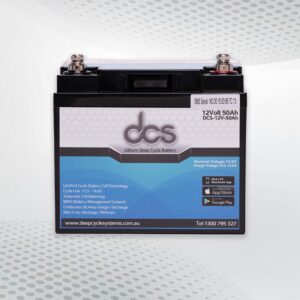Are you experiencing difficulty steering your Honda Civic? It may be time to look closer at your Honda Civic Power Steering Pump. This crucial component ensures smooth and easy steering, making it essential to understand how it works and how to maintain it properly. In this ultimate guide, we will explore everything you need to know about the Honda Power Steering Pump, from identifying signs of failure to troubleshooting tips and steps for replacement. Whether you’re a seasoned DIY enthusiast or a Honda Civic owner new to car maintenance, understanding your power steering pump can save time and money.
What Is a Honda Civic Power Steering Hose?
The Honda Power Steering Hose is an integral component of the power steering system, acting as the conduit through which the power steering fluid is transported. This system typically has two types of hoses: the high-pressure and the return hose. The high-pressure hose directs fluid from the pump to the steering gear, facilitating smooth steering by amplifying the force you apply to the steering wheel. Conversely, the return hose moves the fluid back to the pump or reservoir, completing the circuit.
These hoses are designed to withstand high pressures and temperatures but are not immune to wear and tear. Over time, they may develop leaks due to cracks, or the fittings may become loose, decreasing the power steering system’s efficiency or potentially causing a complete failure. Detecting leaks early is crucial because a drop in the fluid level can starve the pump and steering gear of the necessary fluid, leading to harder steering and increased wear on the system. Symptoms similar to those of a failing power steering pump can often be attributed to issues within the hoses, emphasising the importance of their maintenance.
Regular inspection of the Honda Civic Power Steering Hose is advised as part of your Honda Civic’s routine maintenance. Checking for signs of wear, such as visible cracks, leaks, or signs of fluid on or around the hose and its connections, can help prevent more significant issues. Proper maintenance ensures the longevity of the power steering hose and supports the overall health and functionality of your Honda Civic’s steering system.
Identifying Signs of a Failing Power Steering Pump
Recognising the early warning signals of a deteriorating power steering pump in your Honda Civic is crucial for prompt intervention, helping to avert more severe issues. A clear indication something might be amiss is encountering resistance or difficulty while steering, which should ideally feel smooth and effortless. An unusual whining or squealing noise from under the hood, especially noticeable when turning, often accompanies pump problems. This auditory cue results from the pump straining to circulate the power steering fluid due to malfunction or damage.
Another telltale sign is low or depleting power steering fluid levels, which may suggest a leak within the system. Since the pump relies on a constant supply of this fluid to operate efficiently, any reduction can significantly impact steering performance. Additionally, any signs of fluid leakage around the pump area should prompt immediate attention, as this indicates a breach in the system that could lead to pump failure.
Vibrations felt through the steering wheel, particularly when the vehicle is idling, can also hint at pump complications. This vibration is often due to the pump struggling to maintain an adequate power steering fluid flow. Regularly checking for these signs and addressing any issues early can save you from more complicated and costly repairs. Remember, ignoring these symptoms can lead to increased wear on the power steering system and potentially compromise the vehicle’s safety.
Regular Maintenance Tips for Prolonging Pump Life
Always adhere to the manufacturer’s maintenance schedule and guidelines. This includes regular inspections, lubrication, and replacement of worn-out parts. Following these recommendations ensures the pump operates within its designed parameters, reducing the risk of unexpected breakdowns.
2. Monitor Operating Conditions
Monitor the pump’s operating conditions, such as pressure, temperature, and vibration levels, regularly. Any deviations from normal ranges can indicate potential issues that may shorten the pump’s lifespan. Early detection allows timely interventions, preventing minor issues from escalating into major problems.
3. Keep the Pump Clean
Dirt and debris can cause significant damage to pump components, leading to premature wear and tear. Regular cleaning of the pump, especially the seals, impellers, and filters, can prevent blockages and maintain efficient operation. Ensure that the pump’s surroundings are free from contaminants that might be drawn into the system.
4. Lubricate Moving Parts
Proper lubrication reduces friction and wear on the pump’s moving parts. Ensure that the correct type and amount of lubricant are used per the manufacturer’s recommendations. Over-lubrication can be as harmful as under-lubrication, leading to overheating and potential damage.
5. Address Leaks Promptly
Any signs of leakage should be addressed immediately. Leaks can lead to reduced efficiency and cause damage to other components. Regularly check seals, gaskets, and connections for signs of wear and tear and replace them as necessary.
By following these maintenance tips, you can significantly extend the life of your pump, ensuring reliable and efficient operation for years to come.
Troubleshooting Tips for Your Honda Civic High-Pressure Line
The high-pressure line in your Honda Civic is a crucial component of the power steering system. If you notice difficulty steering, whining noises when turning the wheel, or fluid leaks, these could indicate a problem with the high-pressure line. Begin by checking for visible leaks around the power steering pump, reservoir, and line.
2. Inspecting the Line for Damage
Inspect the Honda Civic High-Pressure Line for signs of wear, such as cracks, fraying, or kinks. These issues can cause the line to fail, leading to a loss of power steering fluid and subsequent steering difficulties. If the line is damaged, it must be replaced to prevent further issues.
3. Checking Connections
Loose or corroded connections can also cause problems. Ensure that the fittings connecting the high-pressure line to the pump and steering rack are tight and corrosion-free. Cleaning the connections and tightening them may resolve minor issues.
4. Bleeding the Power Steering System
Air entering the power steering system can cause erratic steering behaviour. After addressing leaks or replacing the line, bleed the system to remove air. This involves turning the steering wheel fully left and right multiple times with the engine running to force any trapped air out of the system.
5. Seeking Professional Help
If troubleshooting doesn’t resolve the issue, consider seeking professional help. A mechanic can diagnose more thoroughly and ensure that the high-pressure line and related components are functioning properly.
Steps for Replacing Your Honda Power Steering Pump
Replacing the power steering pump in your Honda Civic requires careful attention to detail and a systematic approach. Ensure your vehicle is parked on a flat surface and the engine is cool. With safety as a priority, disconnect the negative terminal from the battery to prevent electrical accidents. The next step involves draining the existing power steering fluid from the system to avoid spills when you remove the pump. This can usually be done by detaching the low-pressure hose and draining the fluid into a catch basin.
Once the fluid is drained, locate and remove the drive belt that powers the pump. This may involve loosening tensioner bolts and carefully sliding the belt off the pulley. With the belt removed, you can now focus on disconnecting the power steering hoses. Be prepared for a small amount of fluid to leak out when you detach these hoses, so keep your catch basin handy.
Your next target is the mounting bolts securing the pump to the engine or chassis. Remove these bolts while supporting the pump to prevent it from falling and potentially causing injury or damage. Once free, carefully remove the old pump from its position.
Before installing the new pump, compare it to the old one to ensure size and port location compatibility. Install the new pump by reversing the removal process: secure it with the mounting bolts, reconnect the power steering hoses, reattach the drive belt, and ensure proper tension. Fill the power steering system with the recommended fluid type and bleed the system to remove any air pockets. This is crucial for restoring full functionality to your steering system. Finally, reconnect the battery, start the engine, and check for leaks and proper operation of your new power steering pump.
Tips for Choosing a Quality Replacement Pump
Finding a reliable replacement is crucial when your existing pump starts to fail. A high-quality pump can ensure efficient operation, reduce downtime, and save on maintenance costs. Here are some essential tips to help you choose the right replacement pump.
1. Understand Your Requirements
Before purchasing a new pump, it’s vital to understand your system’s specific needs. Consider factors such as flow rate, pressure, fluid type, and the operating environment. Matching these requirements with the pump’s specifications ensures optimal performance.
2. Check the Build Quality
A well-constructed pump made from durable materials will last longer and perform better. Look for pumps with corrosion-resistant materials, robust seals, and a solid design. Avoid cheaper options that might cut corners on these critical aspects.
3. Consider Efficiency
Energy efficiency is key to reducing long-term operating costs. Opt for pumps with high-efficiency ratings, which can significantly save energy bills over time. Check for certifications or ratings that indicate a pump’s energy efficiency.
4. Evaluate the Manufacturer’s Reputation
Research the manufacturer’s track record and customer reviews. A reputable brand with positive feedback will likely provide a reliable and long-lasting product. Also, consider the availability of customer support and warranty options.
Conclusion
Ensuring the smooth operation of your Honda Civic’s steering system hinges on the health of the Honda Civic Power Steering Pump. Understanding its function, recognising early signs of trouble, and adhering to a disciplined maintenance regimen can significantly reduce the risk of steering-related problems. Tackling issues promptly and making informed decisions about replacements can safeguard the performance and longevity of your vehicle’s steering capabilities. Furthermore, embracing a proactive approach towards maintenance and being vigilant about pump failure symptoms are key strategies in avoiding the inconvenience and potential safety hazards associated with a compromised power steering system.
FAQS
Q: What are the indicators of a malfunctioning Honda Civic Power Steering Pump?
A: Signs that your Honda Civic Power Steering Pump may be failing include difficulty steering, hearing a whining or squealing noise during turns, noticing a drop in power steering fluid levels, or feeling vibrations in the steering wheel.
Q: Can I replace the power steering pump on my Honda Civic by myself?
A: If you have the necessary mechanical skills and tools, replace the power steering pump independently. However, due to the complexity and precision required for the task, seeking assistance from a professional mechanic is advisable to ensure the replacement is done correctly and safely.
Q: How frequently should the power steering fluid in my Honda Civic be inspected?
A: Regular checks of the power steering fluid are crucial for maintaining your system’s performance. Inspecting the fluid level and condition should be part of your vehicle’s routine maintenance schedule. Additionally, anytime you observe steering issues or hear noises from the steering system, it’s prudent to check the fluid levels.
Q: What should I do if I notice a power steering fluid leak in my Honda Civic?
A: If you detect a leak in the power steering system, it’s important to address it promptly. The first step is to identify the source of the leak, which could be from the power steering pump, hoses, or other components. If the fluid is low, top it off and consult with a mechanic to determine the cause and appropriate repairs to prevent further damage and ensure safe steering.
| Related Business Listings |
| Contact Directory |
| Local Business Profiles |




